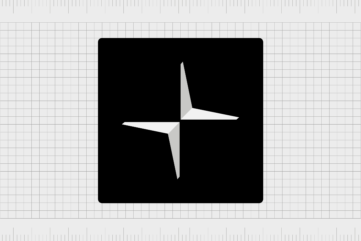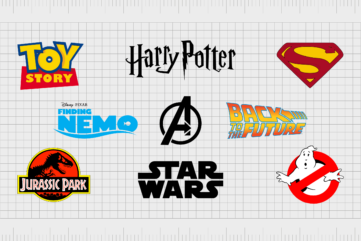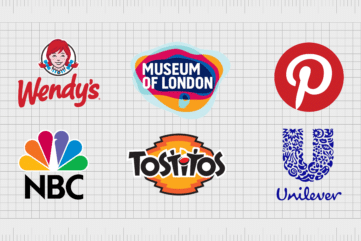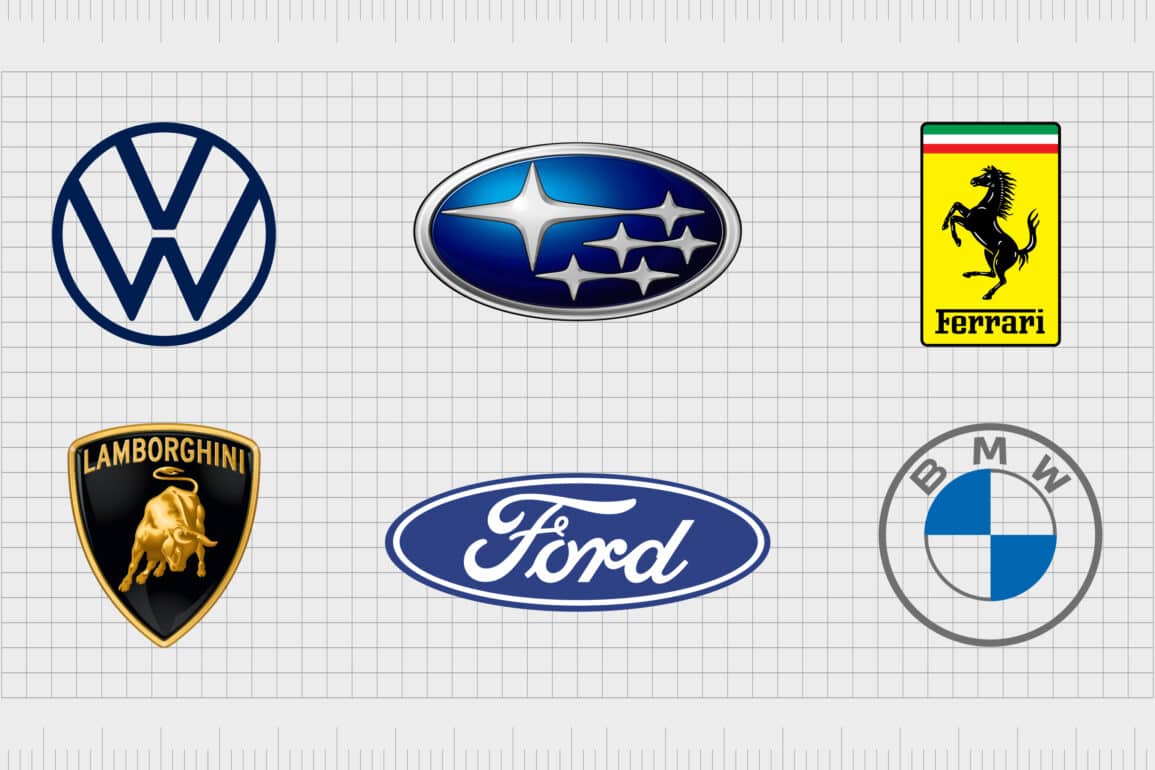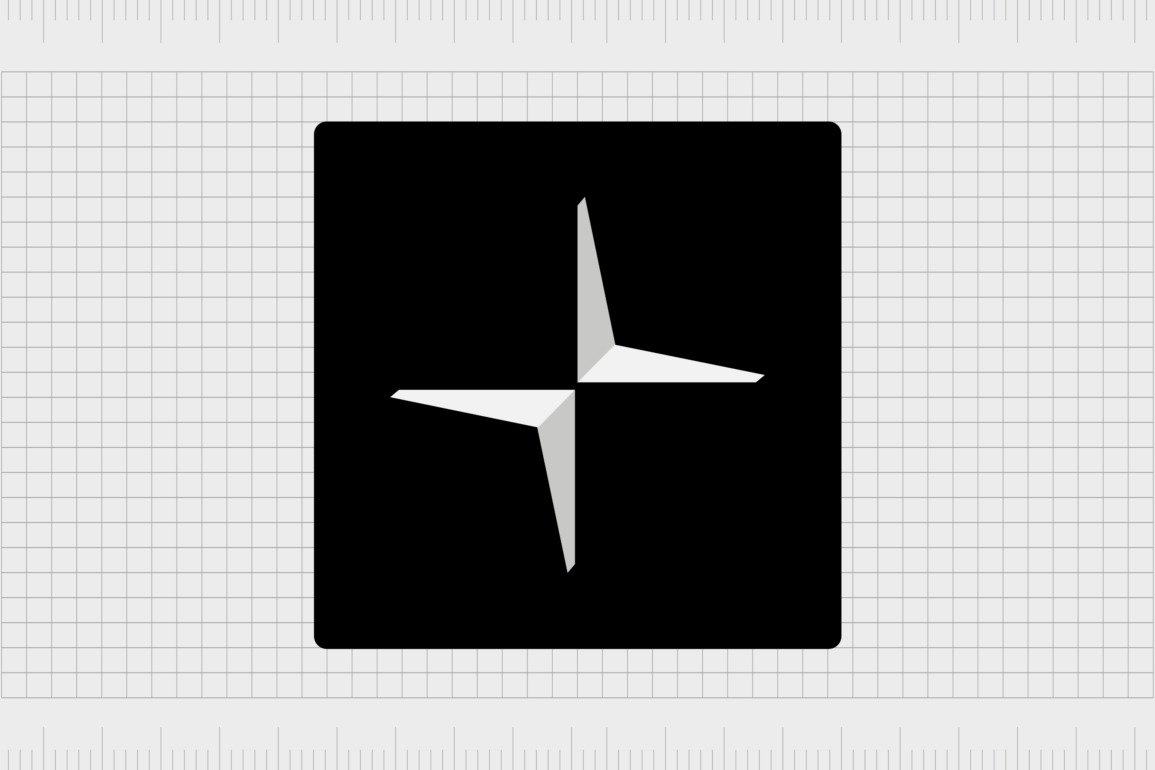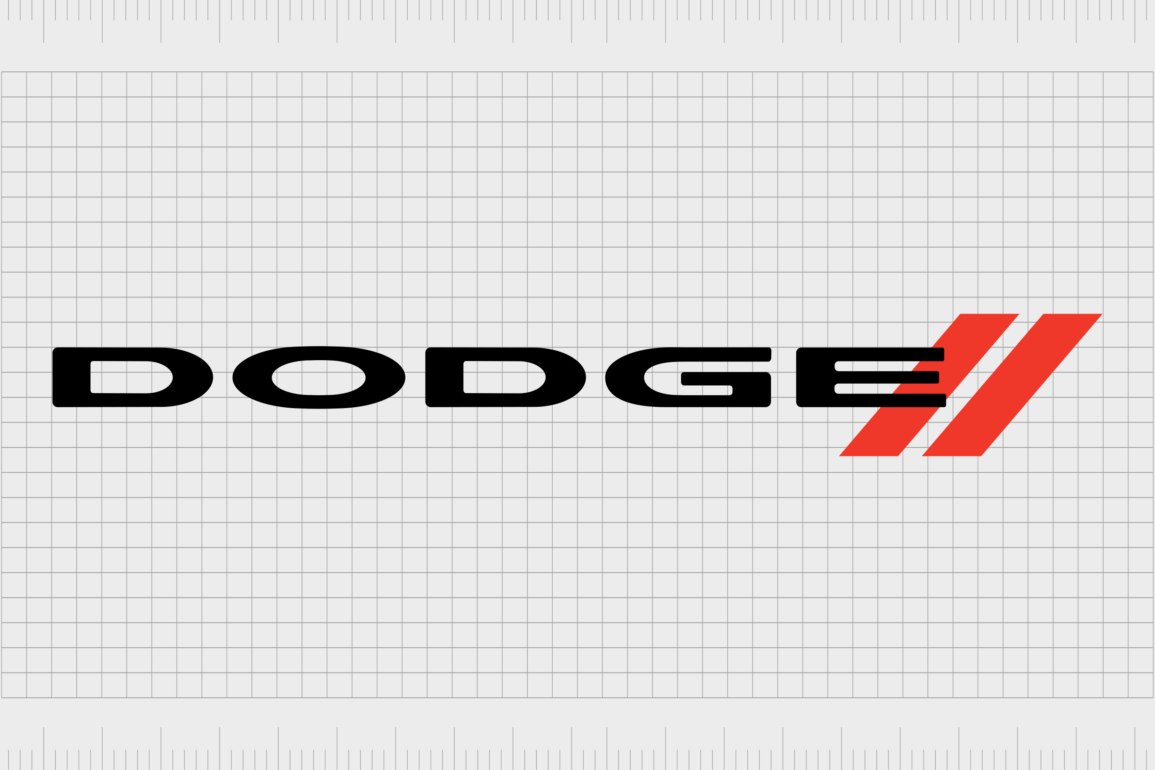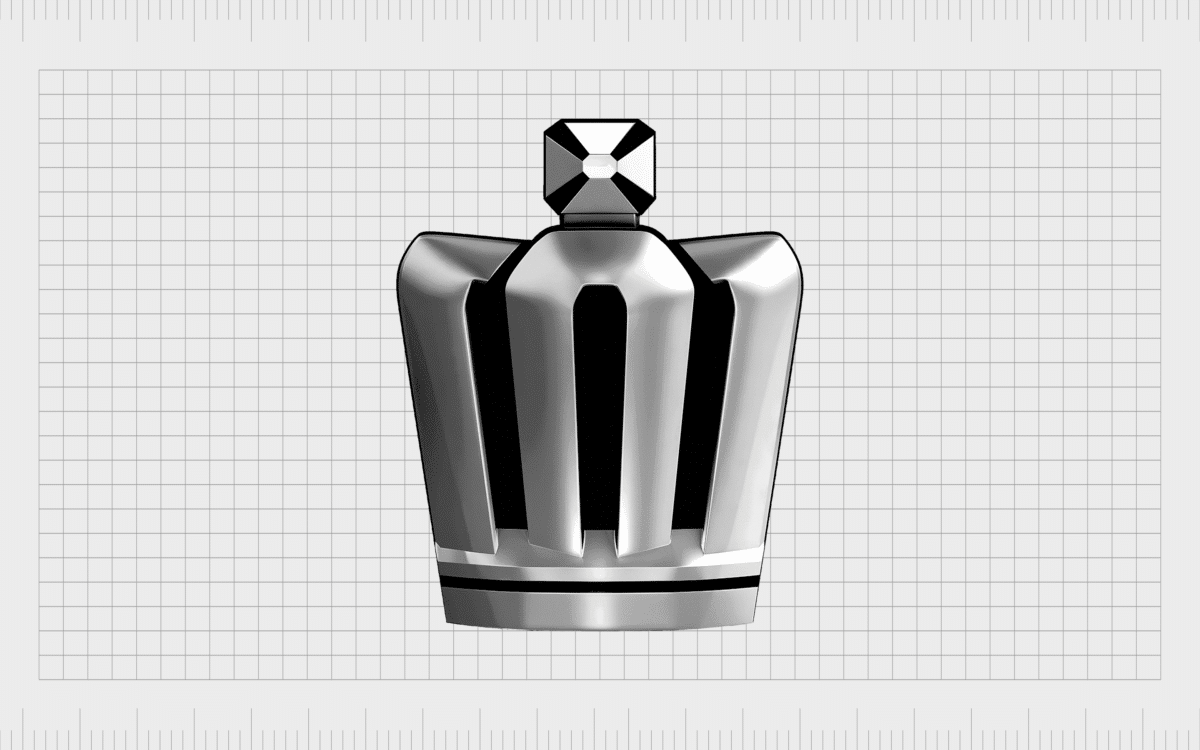Japanese car brands: The essential list of Japanese car logos
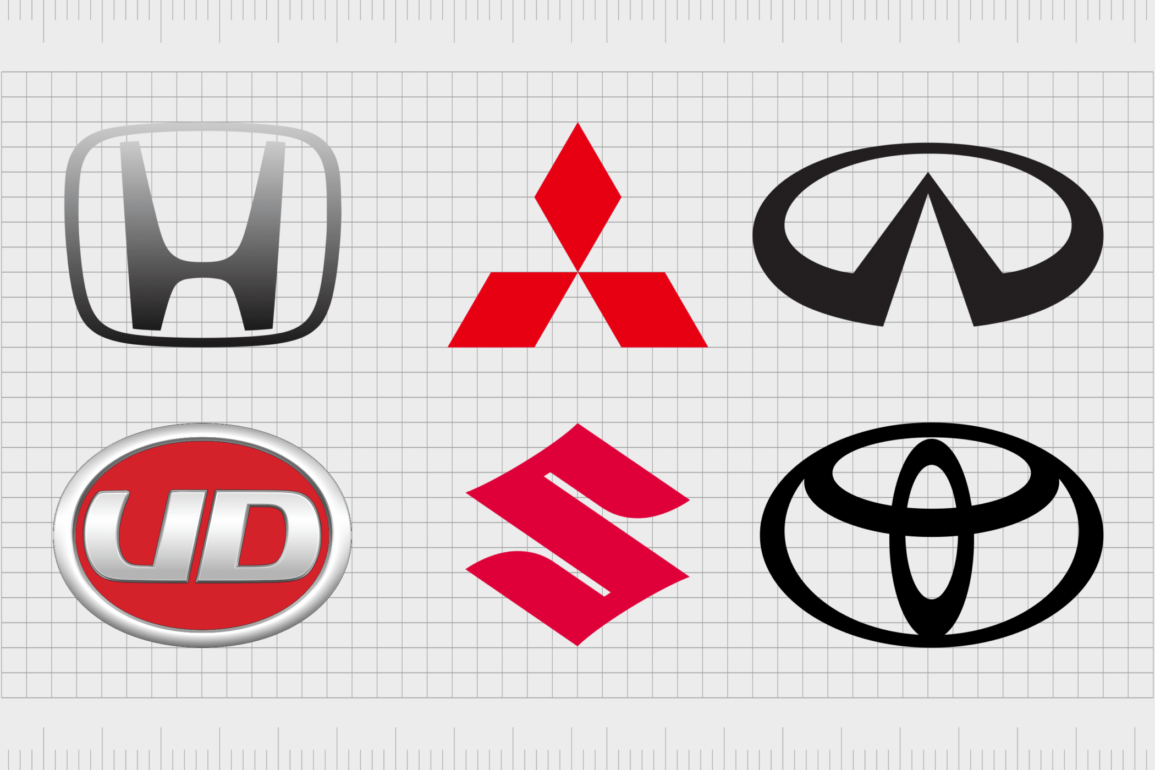
Japanese car brands are some of the most popular in the world. Known for innovative design, exceptional performance and impressive market appeal, Japanese automakers have made waves across the globe. So, how many Japanese car logos can you recognize?
The chances are a number of Japanese car emblems come to mind when you think of the country’s automobile environment, from Toyota to Honda. However, there are more compelling Japanese car companies out there than you may think.
Today, we’re going to celebrate the heritage and performance of Japanese vehicles, by listing some of the top car brands from Japan. More importantly, we’re going to be taking a look at each of the logos these Japanese car companies use to define their brands.
Mass market car brands from Japan
Probably some of the most recognizable Japanese car brand logos come from the vehicle manufacturers who produce their designs for a larger market.
Mass market car brands from Japan include the likes of Toyota and Nissan — the kind of car logos which have successfully made their way around the globe over the years.
Let’s take a closer look at the top logos for mass-market brands…
Toyota
We can’t have an article on Japanese car companies without mentioning Toyota. Easily one of the more recognizable automobile brands available today, Toyota first launched in 1937, and has since produced a wide range of motor vehicles, from hybrid models to classic sedans.
The Toyota logo is based on the name of the company, which comes from “Toyota City” where the organization was initially founded. The image features a series of two ovals overlapped to create a “T” shape in a larger oval border.
The design conveys connectedness and community, while reminding viewers of the company name.
Learn more about the Toyota logo here.
Honda
Another extremely well-known company, Honda has one of the most easily identifiable Japanese car emblems of all time. The brand initially launched in 1948 and is best-known for creating some of the most important technology in the automotive industry, such as piston rings.
Today, Honda offers a wide selection of passenger cars and larger vehicles.
Honda is now one of the largest automotive companies in the world, and its eye-catching, bold logo helps to convey this fact. The image features a capital “H” in a curved rectangle, depicted entirely in silver. The design demonstrates modernity and stability.
Learn more about the Honda logo here.
Subaru
If you’re familiar with car brands with stars in their logos, you’re probably aware of Subaru. Created in 1953, Subaru specializes in the creation of affordable sports cars and quickly became a worldwide innovator, designing some of the most powerful cars in the country.
Subaru’s logo comes from the name of the company, which stands for the Taurus constellation in Japanese. The image used for Subaru’s emblem depicts the Pleiades constellation (a 6-star cluster, not including the 1 invisible star).
The design conveys creativity and ambition.
Learn more about the Subaru logo here.
Nissan
Another excellent example of famous Japanese car companies, Nissan has earned a space on roads all around the globe over the years. Since its launch in 1933, Nissan has achieved sensational success producing mass-market passenger cars with a focus on stability and performance.
The name comes from the merger of two companies which came together to create the brand we know today. Over the years, Nissan’s logo has retained a lot of similar elements.
Today, the image is a sleek and modern image, with a circle around a sans-serif wordmark.
Learn more about the Nissan logo here.
Mazda
Originally entering the market in 1920, Mazda is one of the older Japanese automakers on today’s list which is still going strong. The company was built to deliver high-performance, high-quality cars to the mass market for an affordable price.
For some time, Mazda partnered with Ford to create a variety of distinct divisions.
The Mazda logo is compelling because it appears to have multiple meanings. The shape in the middle of the silver oval looks like a set of wings at first glance. However, the shading of the design also gives the image of an “M” for the name of the brand.
Learn more about the Mazda logo here.
Mitsubishi
Best-known for producing dependable vehicles for a range of customers, Mitsubishi is a Japanese multinational company with an instantly-recognizable image around the globe. The brand was introduced in the 1970s as a division of the “Heavy Industries” Mitsubishi brand.
Eventually, Mitsubishi was purchased by the Daimler AG brand.
The Mitsubishi logo features a series of three red diamonds, aligned together to create a triangular shape. The design conveys ideas of passion, precision, and luxury.
Suzuki
The Suzuki Company initially started life in 1909 and was first famous for the production of high-quality motorcycles. Over the years, Suzuki’s focus on automobiles began to grow, and the manufacturer quickly became one of the top producers in the world.
Over the years, Suzuki has experimented with its logo, but the current emblem in use has been around for more than 30 years now. The image features a sleek “S” designed in red, followed by a wordmark in thick, block blue letters.
The colors represent a combination of passion and reliability.
Find out more about the Suzuki logo here.
Luxury car brands from Japan
Though it’s clear there are plenty of mass market Japanese car companies out there, you’ll also find a wide range of additional brands in Japan too. Luxury car brands from Japan include everything from Lexus to Acura.
These vehicles are designed to showcase not just exceptional performance, but fantastic attention to detail throughout.
Lexus
An icon of class and sophistication, this Japanese car emblem is well-known across the globe today. Lexus, founded in 1983, was built specifically to produce exceptional vehicles for the modern market.
Currently, Lexus is one of the biggest international automobile companies, selling vehicles in more than 70 countries worldwide.
The Lexus logo is as sleek and memorable as the brand itself. This badge features a silver oval, similar to many of the popular logos from Japan, with a broad “L” shape in the middle.
Learn more about the Lexus logo here.
Acura
Acura is one of the younger luxury vehicle brands to emerge in the Japanese market. The company is actually a subdivision of the Honda brand, responsible specifically for producing high-performance luxury cars.
Acura was one of the best-selling brands in the US when the company first entered the country. Today, it’s a popular brand worldwide.
The Acura logo conveys speed and precision, with a stylized capital “A” which almost looks like an arrowhead. Underneath the oval emblem, the Acura name is written in bold, capital letters, with a sans-serif font, to demonstrate modernity.
Infiniti
Emerging as an extremely popular Japanese automaker in recent years, Infiniti appeared in the late 19th century, founded by Bill Bruce. The company forms the “Luxury” section of the Nissan brand, and currently focuses on the production of all-electric and hybrid vehicles.
Infiniti’s logo is an excellent insight into the brand’s forward-thinking vision and dedication to innovation. The design features an arrow in the middle of a silver oval pointing upwards and extending into the distance, like a road.
Learn more about the Infiniti logo here.
Toyota Crown
A special vehicle from Toyota for the luxury division; the Toyota car brand was introduced initially in 1955. The Crown is a single vehicle produced by the larger Toyota brand, but it does have its own logo, to help highlight the unique nature of the vehicle.
The Toyota Crown logo replaces the typical Toyota logo on the front of these vehicles. The image features a bold silver and black crown, intended to demonstrate ideas of heritage, luxury, and performance.
Mitsuoka
Perhaps lesser-known than most of the luxury car brands from Japan mentioned so far, Mitsuoka is a small Japanese automaker.
Launched in 1968, the brand is best-known for developing unique cars with unconventional styling, some of which are designed to imitate the look of retro cars from America, Europe, and Britain.
The Mitsuoka logo is as unconventional as the company itself, derived from the hieroglyph of the Japanese word meaning Kuruma, or car.
Aspark
The Aspark Company is commonly missed off lists of Japanese car makers, because the company produces a wide range of products, including technical, chemical, and medical products. The all-electric sports car produced by the business is definitely worth mentioning, however.
The Aspark Owl is a battery-powered sports car designed to be the world’s fastest electric vehicle. The car itself doesn’t have a specific emblem, but the Aspark logo is present on branding.
This image features two swooping shapes in blue designed to form a capital “A”.
Performance car brands from Japan
Performance car brands from Japan and sports car brands from Japan are often bundled into the same category. While the country might not have as many performance brands associated with it than some other locations, like the USA, there are a handful of great vehicles worth mentioning here.
Nissan Nismo
Otherwise simply known as “Nismo”, this brand is a department of the Nissan Motorsport Company. The name of the company comes from the names “Nissan” and “Motorsports”, combined together.
Nismo formed in 1984 as a result of the merger of two major motorsports departments for the larger parent brand. Unfortunately, the company is set to disappear this year.
The Nissan Nismo logo as it stands today features the name of the brand in sleek, lowercase letters. The “O” of the word is highlighted in red. This image, demonstrating passion and performance, will transform when the company merges with Autech in 2022.
Nissan GT-R
Another creation by the Nissan brand for the sporting and performance landscape, the Nissan GT-R is a single luxury car designed by hand by the company. The vehicle is the successor of the Skyline GT-R passenger cars, and though it isn’t a specific vehicle brand on its own, it does have its own logo.
The Nissan GT-R sports car logo appears on the front of these vehicles instead of the traditional Nissan logo. We see a capital “R” in bright red, to convey passion and drive, with the letters “GT” placed above in sophisticated black.
Daihatsu
A subsidiary of the Toyota Motor Corporation, Daihatsu was first launched in 1951, more than 70 years ago. The company is one of the oldest-surviving internal combustion engine manufacturers on the market.
Although it started building three-wheeled and off-road vehicles, the brand quickly became a well-known name in sports cars too.
The Daihatsu brand uses the bright red coloring common in Japan to convey strength, passion, and ambition. The shape of the “D” in the emblem also creates an arrow pointing up and to the right, to create ideas of progress.
Autobacs
Otherwise known as Autobacs Seven, Autobacs is a retailer of automotive car parts and accessories from Japan. The company primarily sells its components throughout Asia, but it also has stores in France.
The limited reach of the company means this is one of the lesser known Japanese car logos on the market today.
Autobacs’ logo features the name of the company in bold capital letters, slanting towards the right to indicate forward motion and innovation. Above the wordmark is an oval orange shape with a series of white lines.
Vehicle manufacturers from Japan
Japan, like many countries, has a wide range of vehicle manufacturers who specialize in products besides cars. Truck manufacturers, for instance, are particularly common in the Japanese market.
Here are some of the top vehicle manufacturers from Japan we haven’t covered so far…
Hino
A popular brand for the production of light, medium, and heavy tonnage equipment, Hino was first launched in 1942, in Hino-shi, hence the name.
The company is currently part of the much larger Toyota group and has evolved over the years to produce a wide range of vehicles outside of the standard truck market. Hino also produces busses, which it exports overseas.
Hino’s logo helps to highlight the company’s position as the second-largest heavy equipment company from Japan. The image is a bold, block shape in silver, intended to highlight modernity. The shape looks similar to a steering wheel, and a “H”.
Isuzu
One of the better-known vehicle manufacturers from Japan, Isuzu first appeared in 1916 and was relaunched in 1934 under the Isuzu name. The brand specializes in the production of mid-sized trucks, as well as busses, diesel engines, construction equipment, and a range of other items.
The popularity of the brand’s products has helped the company to spread around the world.
The Isuzu brand mark is a simple wordmark, featuring block, capital letters in a sans-serif font. Interestingly, the “S” and “Z” of the name seem to mirror each other, giving a sense of balance to the overall image of the company.
UD
Another popular brand from Japan responsible for producing a wide selection of trucks and heavy-duty vehicles, UD is otherwise known as UD Trucks Corporations.
The company’s two-letter acronym stands for “Ultimate Dependability”, which is exactly what most consumers will be looking for from a truck manufacturer.
Currently, UD is owned by Volvo, and its high-quality logo helps to highlight the strength and durability of the brand. The bold red circle with the silver border conveys a sense of power and sophistication.
The use of sans-serif letters also makes the image more approachable.
Datsun
There’s a good chance you’re already familiar with the Datsun brand, which is currently operating as a subsidiary of Nissan. The original production of Datsun began in 1931, but the company was shut down for a while in 1986, before re-launching again in 2013.
Currently, Datsun is one of the more popular larger vehicle manufacturers in the world. The emblem for this brand is strong and reliable, with the color blue conveying trustworthiness. The bold lines and strong sans-serif font helps to add to the dependability in the company’s image.
Learn more about the Datsun logo here.
Defunct car brands from Japan
While many of the car brands produced in Japan have emerged as highly popular and lucrative companies over the years, it’s worth noting not all companies have survived.
Just like car brands anywhere else in the world, there are a handful of vehicle manufacturers from Japan which have shut down due to being bought out or running out of revenue.
Scion
Scion was a marque from the Toyota Company when it was first introduced during 2003. The sub-brand was intended to appeal to a younger market, focusing on inexpensive, distinctive, and stylish compact vehicles with a sporty finish.
The Scion logo highlights the modern appeal of the brand. A sleek and sophisticated silver logo with an “S” shape in the center falls behind a banner for the brand’s wordmark. The bold lettering and choice of silver for the coloring convey ideas of luxury and power.
Amati
Amati cars was a proposed sub-division of the Mazda Car Company intended to produce luxury vehicles during the 1980s. Unfortunately, the company never really came to life, as it shut down in 1992, two years before it was set to introduce a range of compact executive cars.
The Amati logo was only in its initial stages of design when the company officially shut down. However, the image still offers an insight into the luxury image the brand was attempting to create, using two “V” shapes to create something similar to a set of wings.
Ohta Jidosha
One of the largest Japanese automotive brands in the 1930s, the Ohta Jidosha brand first appeared in 1922, and produced a range of traditional, retro-looking cars between 1934 and 1957.
Eventually, the business was acquired by the Tokyu Kurogane Kogyo Company, and ceased the production of automobiles completely.
An official logo for the Ohta Jidosha brand is difficult to find, but marketing materials from the 1930s depict an emblem similar to a shield, with the name “Ohta” written across it in a white banner.
Prince Motor Company
The Prince Motor Company, which officially launched in 1953, produced cars throughout Japan until it merged with Nissan in 1966. Initially, Prince was a business dedicated to producing airplanes for the Japanese Army in World War 2.
However, it eventually diversified into automobiles, and even produced its own electric car in the 1940s.
The Prince Motor Company logo is as regal as you might expect from a company with such a name. The image features the letter “P” in sophisticated writing on a shield background, all depicted in red – one of the top colors for automobile brands in Japan.
Celebrating Japanese car brands
As you can see from our list of Japanese cars, there’s no shortage of great car brands from Japan to explore and learn about. Many of these companies have produced fantastic logos over the years, to help capture the attention of their audience and build a dedicated consumer following.
There are a handful of trends which you might notice when looking at the Japanese car logos above too, like the use of red – one of the most popular colors in Japan, and shapes like ovals. Shapes similar to wings are quite common too.
Remember, if you want to learn more about Japanese car company logos, or you’re keen to discover more amazing logos from leading brands around the world, you can find more great posts on the Fabrik Logofile.
Now read these:
—Which car companies own which car brand?
—Famous car brand logos and meanings
—The ultimate list of French car brand logos
—The 50 best-known car logos with wings
—The definitive guide to German car logos
—Famous car logos and emblems with stars
—Top American car brands and their logos
—American car companies that went bust
—The conclusive guide to British car logos
—A decisive guide to car logos with circles
Fabrik: A branding agency for our times.


